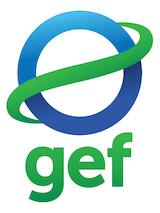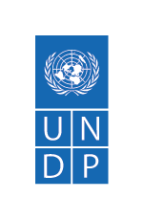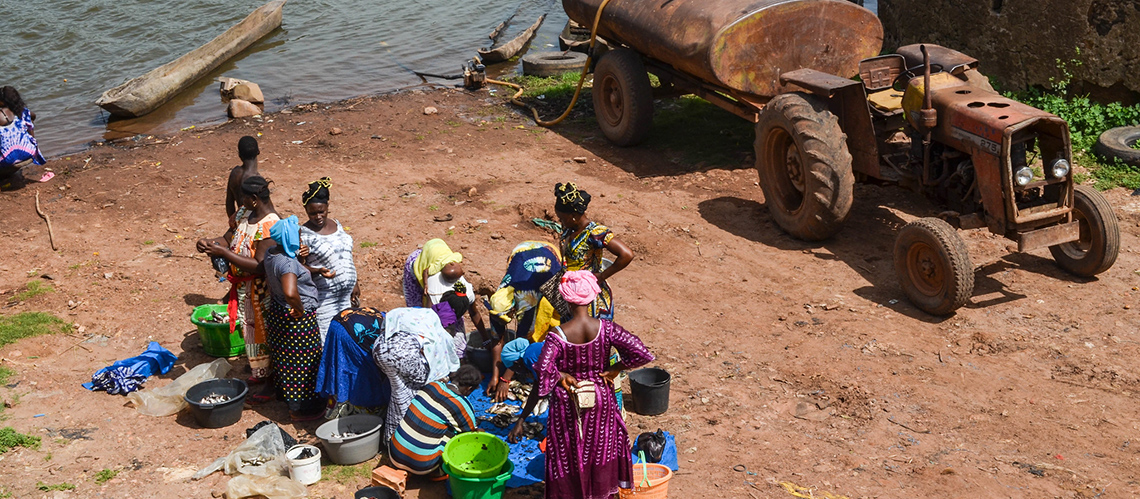Strengthening the Resilience of Vulnerable Coastal Areas and Communities to Climate Change in Guinea-Bissau
The objective of this GEF-LDCF-financed project is to strengthen the adaptive capacity and climate resilience of vulnerable coastal communities to climate risks in Guinea-Bissau.
The 5-year project (2019-2024) has three main components:
- Support the establishment of an enabling political, institutional and administrative environment for advancing the management of the climate risk in the coastal zone;
- Finance additional investments in hard and soft coastal protection measures to help maintain critical economic and natural infrastructure in the face of sea level rise and coastal degradation. Those will include interventions in the agricultural and fisheries sectors, as well as relating to nature protection and ecosystem restoration, for which the project will build on achievements from baseline interventions and work in close collaboration with co-financed ones; and
- Contribute to strengthening the climatic resilience by having livelihood options for the coastal communities with the special emphasis to most vulnerable groups such as women and youth.
Expected outcomes
Outcome 1 - Policies, regulations institutions and individuals mandated to manage coastal areas strengthened to reduce the risk of climate change
Outcome 2 - Vulnerability of coastal investments to climate risks reduced through the design, construction and maintenance of coastal protection measures
Outcome 3 - Rural livelihoods in the coastal zone enhanced and protected from the impacts of climate change
Project details
Levels of intervention
- National
Source of funds
- Global Environment Facility - Least Developed Countries Fund
Key implementers
- National Governments
Funding amounts
US$26 million (including US$2.5 million from UNDP, US$14 million from World Bank, US$9.3 million from AFDB and US$300,000 from the Government of Guinea Bissau)
Project partners
- United Nations Development Programme (UNDP)
- Global Environment Facility (GEF)
- World Bank
- Government of Guinea-Bissau
Project dates
Introduction
The objective of this GEF-LDCF-financed project is to strengthen the adaptive capacity and climate resilience of vulnerable coastal communities to climate risks in Guinea-Bissau.
The 5-year project (2019-2024) has three main components:
- Support the establishment of an enabling political, institutional and administrative environment for advancing the management of the climate risk in the coastal zone;
- Finance additional investments in hard and soft coastal protection measures to help maintain critical economic and natural infrastructure in the face of sea level rise and coastal degradation. Those will include interventions in the agricultural and fisheries sectors, as well as relating to nature protection and ecosystem restoration, for which the project will build on achievements from baseline interventions and work in close collaboration with co-financed ones; and
- Contribute to strengthening the climatic resilience by having livelihood options for the coastal communities with the special emphasis to most vulnerable groups such as women and youth.




Project details
According to Guinea-Bissau’s NAPA (2006), the primary drivers of the climate vulnerability of the coastal areas and communities are physical exposure, dependence on agriculture and fishing as main livelihood options, and poor governance. Low-elevation coastal zones are especially vulnerable in Guinea-Bissau. Most of Guinea-Bissau’s land consists of coastal swamps and mangroves, and over 19 percent of its land area lies in areas less than 10 meters above sea level. The majority of the population (about 82 %) work as subsistence farmers and climate change has already begun to affect coastal farmers through increased flooding and saltwater encroachment into their rice paddies due to global sea level rise. The coastal communities and the whole population of Guinea-Bissau rely on mangrove stands and coastal lowlands for rice cultivation as a main source of income and food.
A recent study (Sally Brown and all, 2011) has projected sea-level rises (in comparison of 1995 level) of 0.13 m, 0.35 m, 0.72 m and 1,22 m for 2025, 2050, 2075 and 2100 respectively. With a large and growing population in the coastal zone and a low adaptive capacity due to low national wealth and other development indicators, Guinea-Bissau appears to be highly vulnerable to sea-level rise. Without adaptation, the physical, human and financial impacts will be significant.
Sea-level rise has the potential to displace hundreds of thousands of people over the next 100 years. With a rise of 0.13 m in 2025, 77,800 people will be flooded per year. with a rise of 0.35 m in 2050, 179,800 persons will be flooded per year. The total cos t of sea-level rises for Guinea-Bissau combining costs of forced migration, land loss, salinization, sea floods and river floods will be US$8 million per year for 2025, US$29.9 million per year for 2050 and are estimated at US$361.8 million per year by 2100.
Climate change is predicted to also have adverse effects on fisheries and fishing. Rising sea temperatures and changes in the oceans’ other dynamics, such as acidification and loss of nursery areas, are predicted to reduce fish populations. Meanwhile, in places with rich fisheries like Guinea-Bissau, the destruction of coral reefs and mangroves destroys fish spawning grounds, decreasing the availability of fish, limiting the livelihoods of fishermen, and leading to precarious food security as sea foods are the main sources of proteins for the coastal communities.
To address these challenges, the preferred situation is for Guinea-Bissau to have the capacity at national, regional and local levels to develop, plan and implement coastal management measures that increase resilience of coastal communities’ livelihoods and economic activities to climate change induced risks. This would imply that the climate change risks and relevant adaptation options be mainstreamed in the coastal development policies, strategies and initiatives, and the decision makers and technical staffs of the line sectors. This would also mean that the coastal communities have the required institutional support and technical and economic capacity to gradually and sustainably transform their structures, functioning, social organization and economy in order to increase their capacity to absorb shocks as well as slowly manifestation changes that undermine economic development.
- National
- National Governments
- United Nations Development Programme (UNDP)
- Global Environment Facility (GEF)
- World Bank
- Government of Guinea-Bissau
US$26 million (including US$2.5 million from UNDP, US$14 million from World Bank, US$9.3 million from AFDB and US$300,000 from the Government of Guinea Bissau)
News
Reports & publications
Videos & multimedia
Newsfeed
Contacts
- UNDPRandall PurcellRegional Technical Adviser, Climate Change Adaptation

